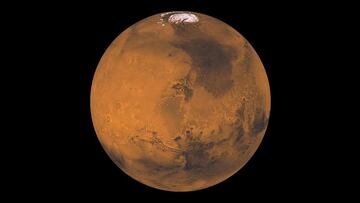How often do the planets line up for viewing from earth and when will the next alignment be?
A planetary alignment, or parade, will be visible in the United States this week, a phenomena more common than you might think.


The latest astronomical marvel will take place across our skies over the next few days, with no fewer than six planets set to line up together in what some are calling a planetary alignment, and others a planetary parade.
What are planetary alignments and parades?
Technically speaking, ‘planetary alignment’ is the official astronomical term for what happens any time two planets or more line up in a row. A ‘planetary parade’ is less of an exact term, but is basically when five or more planets file into a small area in the sky. Both apply to what we’re going to see this week.
Peak time is expected to be at 5:20am ET on Wednesday, August 28.
Which planets will be visible? Where is the best place to see them?
Mercury, Mars, Jupiter, Uranus, Neptune, and Saturn are all set to be visible, although you’ll only be able to spot Uranus and Neptune with some form of optical aid. Wherever you are in the United States, the alignment/parade should be visible, although it will all depend on cloud cover, as these things tend to do.
Planetary Alignment 23 April 2022 pic.twitter.com/ni6H65E12n
— Space (@redditSpaceView) April 24, 2022
It might seem obvious, but avoid areas with tall buildings or mountains that might obstruct the view of the horizon. Dark sky locations away from city lights will provide better visibility, especially for spotting dimmer planets like Uranus and Neptune.
Planetary alignments and parades are essentially optical illusions, which Time Magazine has described as “randomly placing six different people at six different spots in a field and positioning yourself so that you can gather them all in your camera lens at once.”
The frequency of planetary alignments
Perhaps as a result of that, the phenomena actually happens much more often than you might think.
Related stories
This will be the third such event in 2024, with previous ones taking place on April 20 (Venus, Mercury, Neptune, Mars and Saturn) and June 7 (Mercury, Jupiter, Uranus, Mars, Neptune and Saturn).
If you miss this week’s one, don’t fret. You won’t have to wait too much longer for the next one. On January 18, 2025, Mars, Jupiter, Uranus, Neptune, Saturn and Venus will line up for your viewing pleasure, while there will be a great planetary alignment (to our eyes at least) a little more than a month later on February 28.


Complete your personal details to comment